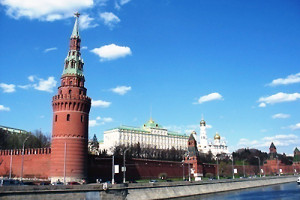Putin Doesn’t Have a Grand Design, Pastukhov Says; Instead, He’s Reacting to Events and has Become Their Prisoner

(Paul Goble – Window On Eurasia – Staunton, May 1, 2021)
Many profess to see what the Putin regime is doing now as transformational, as a fundamental and planned shift from authoritarianism to totalitarianism, Vladimir Pastukhov says. But in fact, what is going on represents “a continuation of Putin policies of the past via new methods modified because of changed circumstances.”
Putin and his leadership team do not think in grand “metaphysical” categories: they “simply resolve current problems within the framework of the logic to which they are accustomed.” They act in primitive ways, more reactive than creative and approach things directly rather than in a complex way (mbk-news.appspot.com/sences/politicheskij-lokdaun/).
But precisely because they do not have a plan, the men in the Kremlin may discover that an action they have taken to address one problem may soon compel them to take more actions and that they will thereby create a trend which makes it look like they have a plan when in fact they are prisoners of events, Pastukhov continues.
The present upsurge in repression arose from the events in Moscow in the summer of 2019 when the Kremlin felt that a second revolutionary wave was building. (The first ended in 2011-2013),” the London-based Russian analyst says. Since then, the situation developed with more repression leading to more protests leading to more repression.
What the regime wants to do makes good sense from its perspective, he suggests. It wants to keep any revolutionary activity within acceptable limits and not allow it to grow to the point that it might set off a sustained chain reaction. How much repression it uses depends on the regime’s evaluation of the situation at each moment.
According to Pastukhov, “the trigger for the paranormal outburst of repression now observed was an accidental chain of events which began with the risings in Minsk and continued with the hysterical attempt to kill Navalny” followed by the regime’s incarceration of him when he didn’t die but instead returned to Russia.”
“But the presence of a trigger is not an all-embracing explanation.” For that one has to look elsewhere, and Pastukhov suggests that the Kremlin acted as it did because it had a ready-made model for behavior: the lockdown it imposed on Russians because of the coronavirus pandemic.
“The idea of a lockdown as a universal means of struggle with any infection, including revolutionary ones, seemed to many in the Kremlin a productive one,” the analyst suggests. It represented “a specific Russian variant” of the slogan ‘stay home, be safe.’” And thus, “to interrupt the transmission of the revolution, it was decided to put society under quarantine.”
The logic is compelling, but there is a problem: a lockdown against a virus ends when the virus dies out or people decide to ignore it. Those who impose a lockdown against a revolutionary infection can’t afford to ever let it end. Instead, they must employ more and more force to ensure that people stay home and stay safe.
What that means is that the Kremlin almost certainly will apply ever more force not because it has a model of a totalitarian state it wants to build but because it has chosen a tactic that forces it to use ever more force at the risk of losing control of the situation, Pastukhov continues.
At some point, something will happen that will destroy this lockdown and the regime with its repression will collapse remarkably quickly. Society won’t be sorry to see it go, but the process is going to involve much violence first by the state and then by both the state and society, and it is thus something best observed from a safe distance.
[article also appeared at windowoneurasia2.blogspot.com/2021/05/putin-doesnt-have-grand-design.html]
